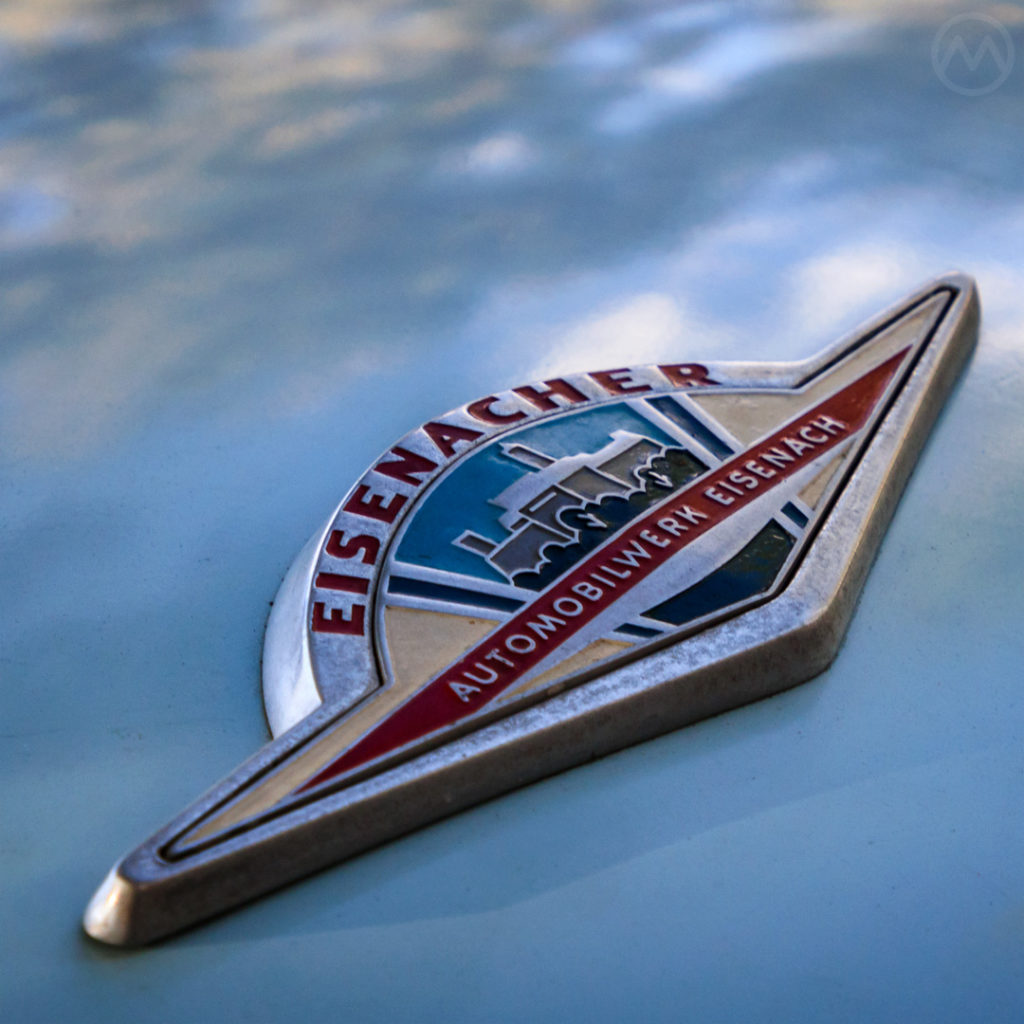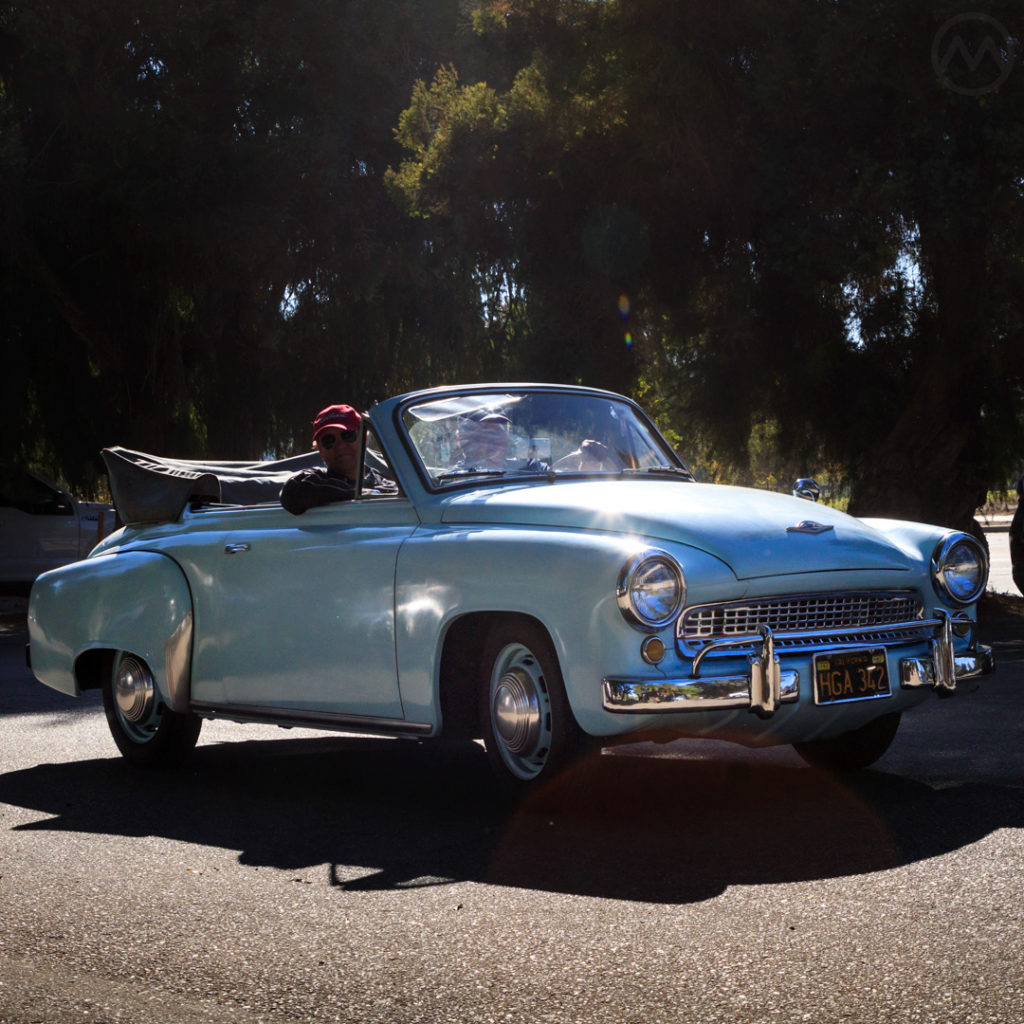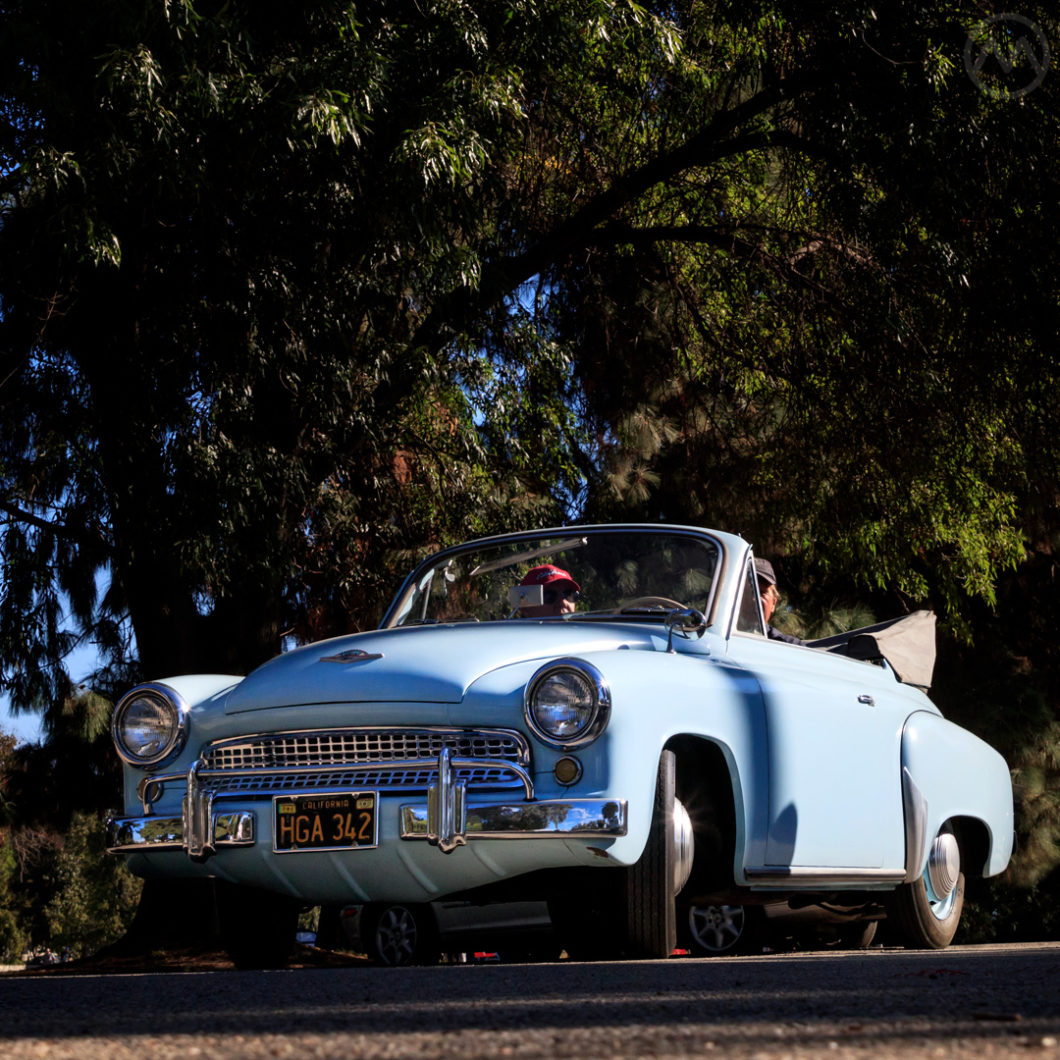No, those California black plates don’t lie, this is an East German Wartburg 311/2 convertible that was sold new in Los Angeles, in what is now Arlington Heights.
In the late 1950s, an enterprising car dealer Willy Witkin sold Wartburgs brand new in the USA. Witkin managed to set up franchises in as many as seven (mostly Western) states, which isn’t so surprising given how many imported brands arrived stateside in that decade. Witkin sold a slew of names Americans had never heard of ten years earlier, but that broad category could also have included Austin, Renault and Volkswagen.
“Communist” cars were different. The unlikely (if actually reasonably decent) car with the funny name proved a hard sell, as did the Skodas Witkin also repped. Wartburg’s American adventure came to an end after the rise of the Berlin wall, but the story of the 311 is its own wild tale in which the only constant seemed to be change.
The name derives from Wartburg Castle, which overlooked the factory – originally called Fahrzeugfabrik Eisenach and founded in 1896 to make guns and bicycles. The first cars emerged in 1898. After taking a financial bath building licensed Decauvilles, the company was reorganized in 1903 into the more successful Dixi.
Dixi began building licensed Austin Sevens in 1927 and a year later, in the fall of 1928, was bought by BMW – leading to that make’s very first car, the uncreatively named BMW Dixi, later the BMW 3/15.
Eisenach Vs. Munich
Until the war, car production was based at Eisenach and Motorcycles were built in Munich, but by 1944 Eisenach was under Soviet control and the factory became property of the state after hostilities ended. It continued making prewar BMW cars, but was no longer part of the “real” BMW in Munich, which was pretty much in ruins in 1945.
Munich definitely did not care for Eisenach using the BMW name on cars it had nothing to do with, but couldn’t do much about the situation until control of Eisenach passed to the Deutsche Demokratische Republik (DDR) authorities in 1952.

That year, as it was launching the 501 “Baroque Angel,” BMW successfully sued Eisenach to force a formal name change to “EMW.” To match Munich’s new 501, the company wanted to replace the prewar cars with elaborate new ones and showed striking prototypes, the EMW 342/343, but they were not to be.
DDR authorities wanted more proletarian fare – transferring the IFA F9 to the factory in 1953. The old F9 was essentially DKW’s F9, a pre-war design that didn’t make it into production before the war started, and was introduced just before the “real” DKW’s F89, which was broadly the same car.
The F9 wasn’t bad, but EMW’s engineers definitely considered it a step down from the planned 343, which they were pretty certain they’d never be allowed to build.
The 343 was a big luxury car, and the only countries that could afford such cars were increasingly hostile to anything from behind the Iron Curtain. One of the prototypes, with a ‘49 Ford influence, had been theoretically aimed at Americans, right around the time Senator Joe McCarthy was claiming to know the names of “205 Communists in the State Department.”
McCarthy changed his numbers depending on the audience and had little regard for the truth, but American antipathy to anything from Communist countries was plain to see.
Under communism there was no market for the big 343 at home, and no resources would be allocated for it.
F9 to 311
With no prospects for what they really wanted to do, Eisenach’s staffers developed, in secret, the EMW 311 – a new car with new styling by Hans Fleischer.
When DKW/Auto Union threatened legal action as BMW had, the 311 got the greenlight from the politburo – as the Wartburg 311. This dusted off an old name from the factory’s early years (1898-1904), which gave the car some plausible heritage that wouldn’t draw a lawsuit. The “3” was the last vestige of BMW’s designations.
Externally the 311 was bang up to date and it drove fairly well, but underneath much was recycled from the F9. In many regards, the fundamentally good design of the old F9 helped a great deal. Power came from a punchy 900-cc 2-stroke with just 7 moving parts driving the front wheels on a modified F9 frame – almost all of which was inherited from or based on F9 components.
Being a body-on-frame car meant many bodies could be offered – no fewer than 12 styles were catalogued – roadsters, pickups, wagons, each with their own code. Some, like the Borgward Isabella coupe-influenced 313/1 Roadster, ended up being quite rare.
The convertible, built by VEB Karosseriewerk Dresden (formerly Gläser but also nationalized under the Soviets), was 311-2. The chunky, well-sealing top sat high up when folded, not unlike a pre-war Horch or a VW Convertible.
The DDR was eager to export cars, and a full line of 311s were on display at the 1957 Brussels show. What would cost East Germans a pretty penny was often sold for much less in export markets, even in West Germany, where a Wartburg 311 sedan was often less than half the DDR price (if you could get one, you had to wait on a list). They even prepared RHD versions. The appetite for western currency and the ability for the government to dictate prices to the company made exports a much better deal than cars sold at home for all parties except DDR consumers.
Willy Witkin
In 1958 a Brooklyn-based importer was set up for the Wartburg, but when nobody would pay for the floorplan financing (the process by which dealers typically buy their inventory) on the initial batch of cars, Witkin stepped in. The cars went to Los Angeles instead.
A sharp recession in late 1957 and early 1958 – the “Eisenhower recession” as it later came to be known, wreaked havoc on big, fancy American cars – but it was generally a good thing for small, cheap cars and particularly imports. Hillmans, Renaults, and Volkswagens did very well in the late 1950s. Wartburgs, however, had a big hill to climb.
The 311 was, thanks to its proven, simple components and decent build, actually at or near class parity with many other imported cars in 1959. In an alternate universe it could have been as successful as the Saab 96. But anything “communist” was almost impossible to sell in America in the 1950s. The car’s origin required a distinct level of social bravery on the part of the buyer.

The public’s appetite for new imports aside, some models were also priced a little too high – the 311/2 competed directly with the similarly priced Hillman Minx convertible but the roadster version was almost $1000 more.
While the car was basically even with its competitors in terms of how it drove, the workmanship used to build it was often not. One of the claimed reasons behind banks not wanting to finance the cars was that their paintwork was supposedly fairly poor. And though the cars were relatively easy to maintain, that was only true if you could get parts, and many Americans didn’t really understand two-stroke engines even back then when they were more common.
Witkin took out lots of advertising to recruit dealers and there were also loads of sales materials, but the cars were hard to move off the lot. Still about 800-1,300 found homes before the 1961 Berlin crisis put a fork in the whole affair. Witkin later claimed 1,303 sales.
The Berlin Standoff
Tensions in Berlin had risen since 1952, when travel restrictions began to be imposed between East and West. Berlin, administered jointly by the Allies and international city, became the funnel point for thousands of people who wanted to leave the East. Things came to a head in August when the DDR government began construction of the Berlin Wall. The fallout from that led to a tense standoff between tanks near Friedrichstraße on October 28th and ultimately, the division of the city.
With this sharp escalation in tensions, Witkin was on the receiving end of a considerable amount of hate mail for selling the cars. Between that and the factory’s reluctance to change anything about the cars to tailor them to North America, Witkin dropped the enterprise, though some sources suggest the cars remained on sale into 1966 – it’s possible they were many unwanted leftovers.
The design carried on into the late 1960s before being replaced by the modernized, angular Wartburg 353, which itself was forced to carry on for many, many years. Special thanks to Victor B, for bringing this car out to the Best of France and Italy show in Los Angeles and running the excellent wartburgusa.com, where you can learn loads more about Witkin and the cars.

